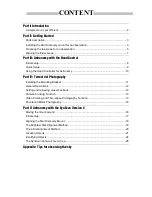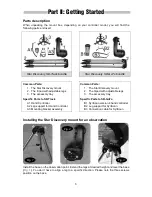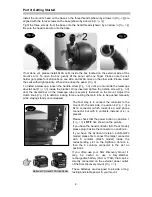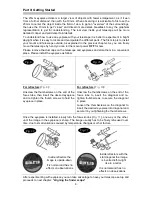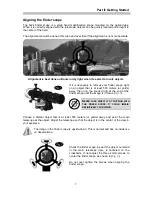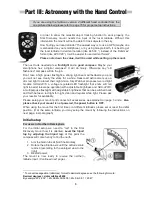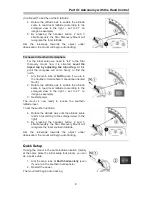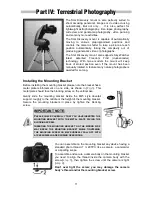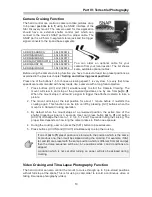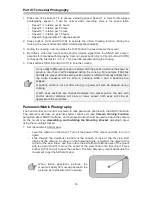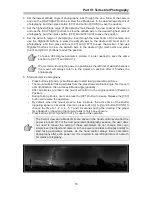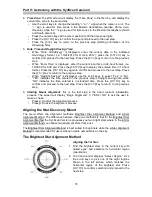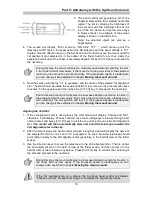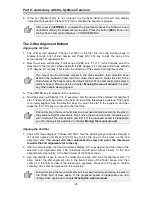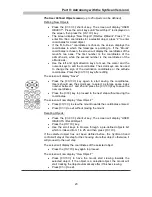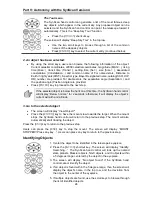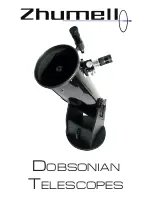
Part III: Astronomy with the Hand Control
10
Using the Hand Controller for Astronomy
The basic movements of the Star Discovery mount are directional movement, slewing, and
tracking. The tracking rate is
sidereal rate
. Sidereal rate means the Star Discovery mount will
move automatically on both vertical and horizontal axis to keep a sky object centered on the
field of view.
The directional keys
(
Fig.1
)
are used to move the mount. The four
direction buttons are used to rotate the mount horizontally and
vertically. If two opposite buttons are pressed at the same time, only
the button first pressed will respond. AZ (azimuth) and ALT (altitude)
axis can be adjusted at the same time.
The slewing speeds
(
Fig.2
)
allow the user to choose from 5 rotating
speeds by pressing any of the 5 other buttons. Speed 1 is the slowest
and Speed 5 is the fastest.
Speed 1 and Speed 2 are for centering an object in the eyepiece of
the telescope.
Speed 3 and 4 are for centering an object in the red dot finder of
the telescope.
Speed 5 is for rotating the mount at full speed.
Other function:
The celestial object tracking function can be switched on/off by
simultaneously pressing the buttons 1 and 2. While tracking, the
backlight of the button representing the current selected speed will
flash. If tracking is off, the backlight will be continuously lit.
Equatorial Mode Tracking
The hand control can also control a mount tracking under equatorial mode for short focal
length astrophotography.
1. Polar-align the mount (Set up the mount with its vertical axis pointing to the celestial
pole using a strong ball head or with an equatorial wedge.)
2. Press and hold the SET button on the keypad and then turn on power. Now the
azimuth axis will start rotate at sidereal rate to compensate sky drift caused by the
earth
’s rotation.
3. The tracking direction is opposite in Northern hemisphere and Southern hemisphere,
thus user should set the local latitude correctly before turning on the equatorial mode
tracking.
Tracking accuracy depends on multiple factors, such as: level of the base,
accuracy of pointing to true North before turning power on, accuracy of setting
local latitude, celestial object types: Sun, Moon, planet or stars or the position of
the target in the sky. It is normal to find that the celestial object still drifts slowly in
the eyepiece of the telescope during tracking; however the drift will be much
slower compared to a telescope without tracking function.


